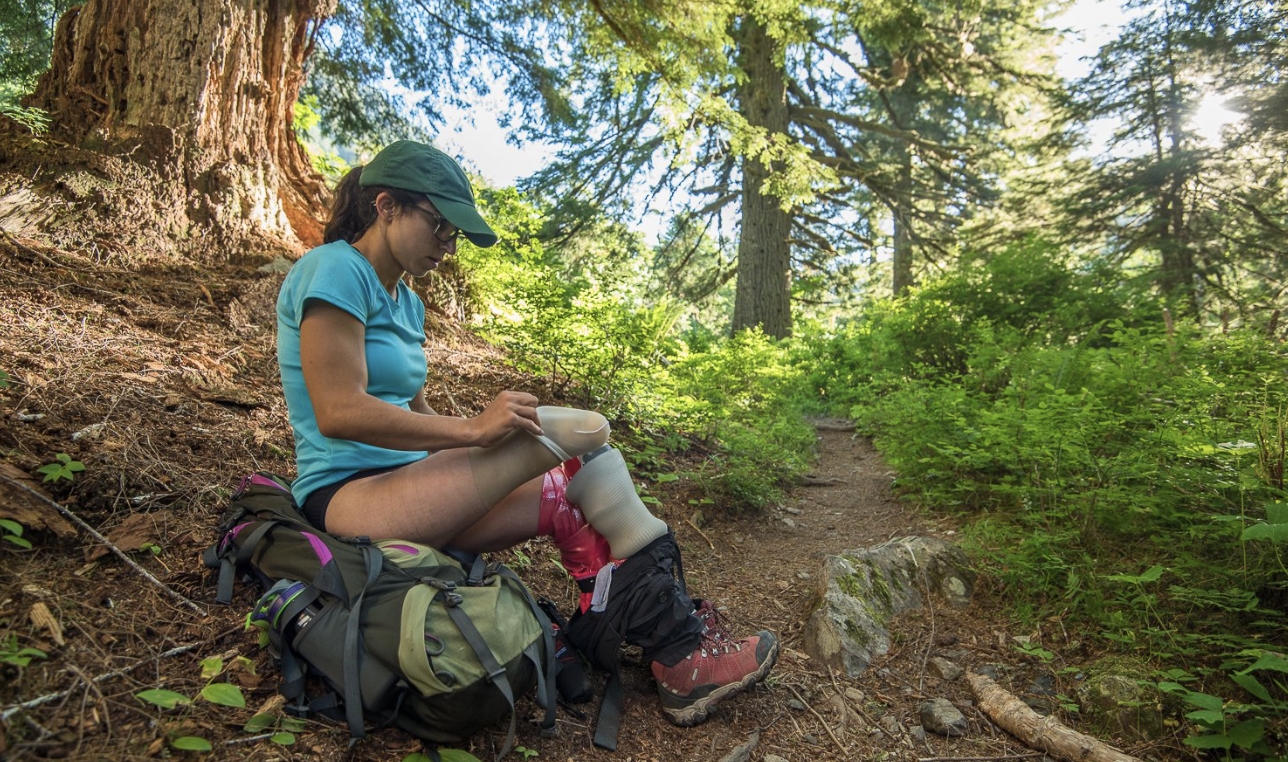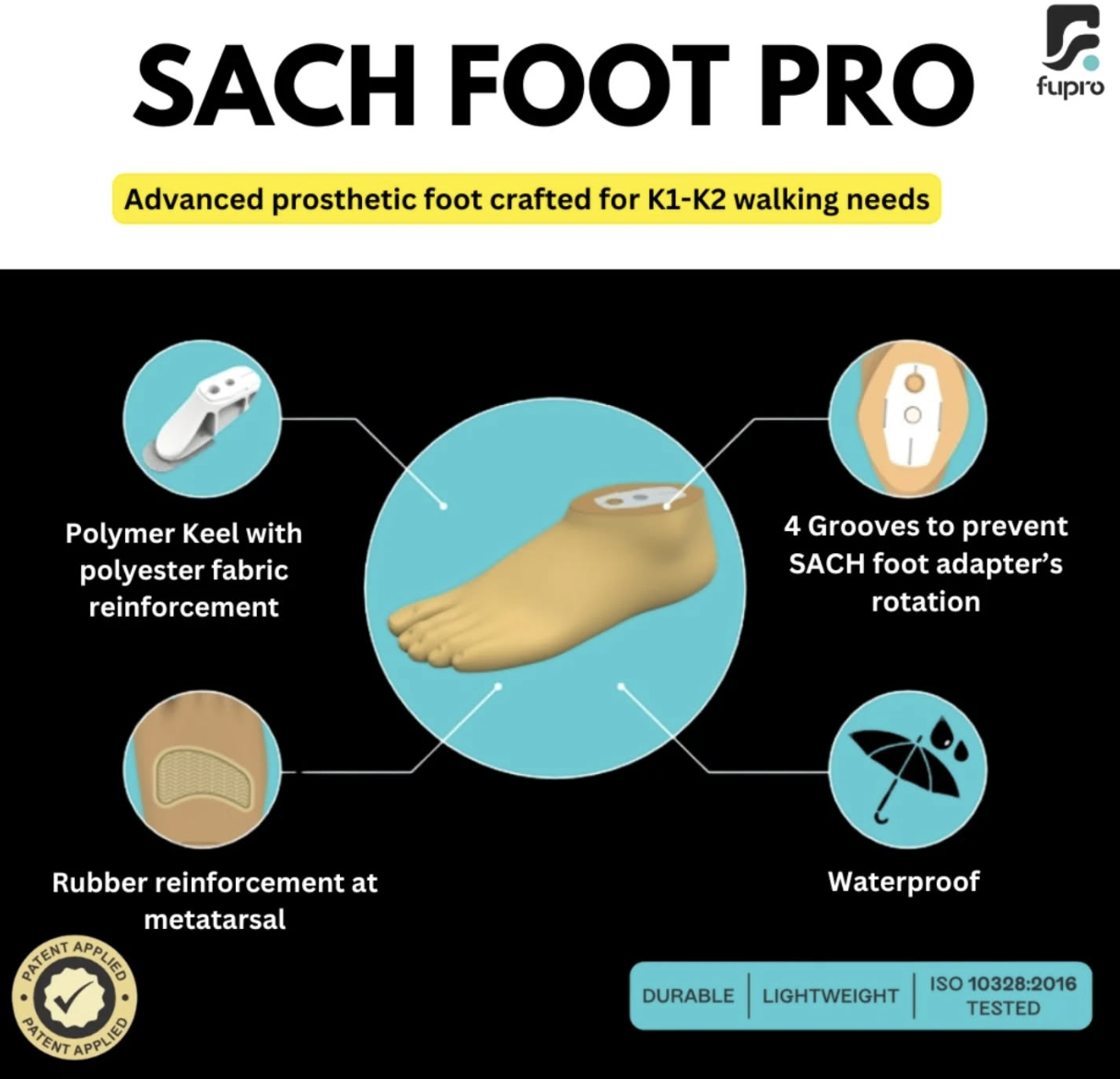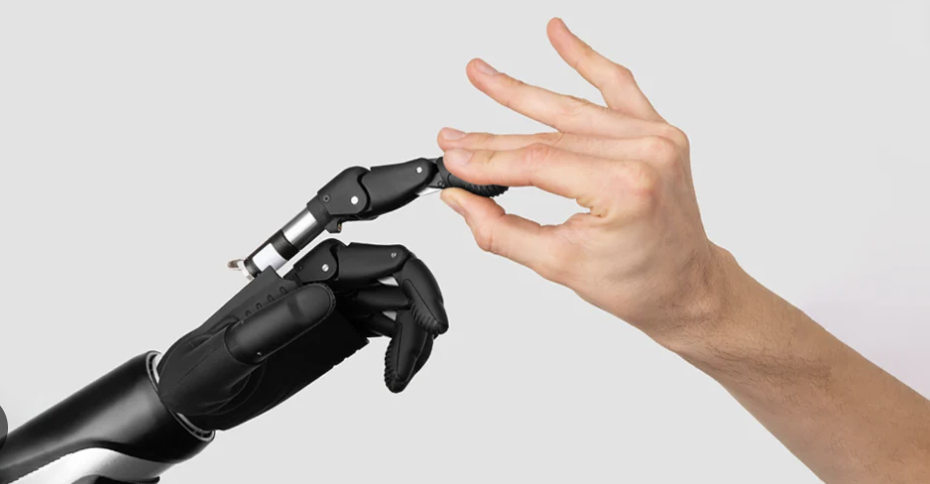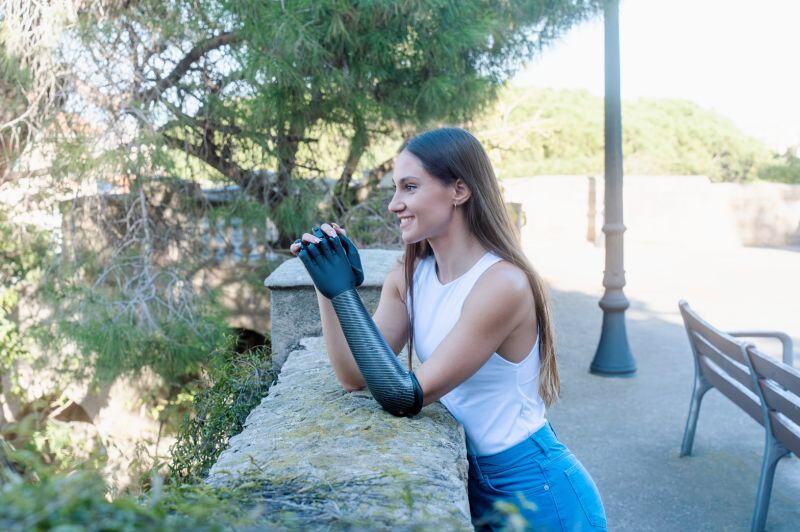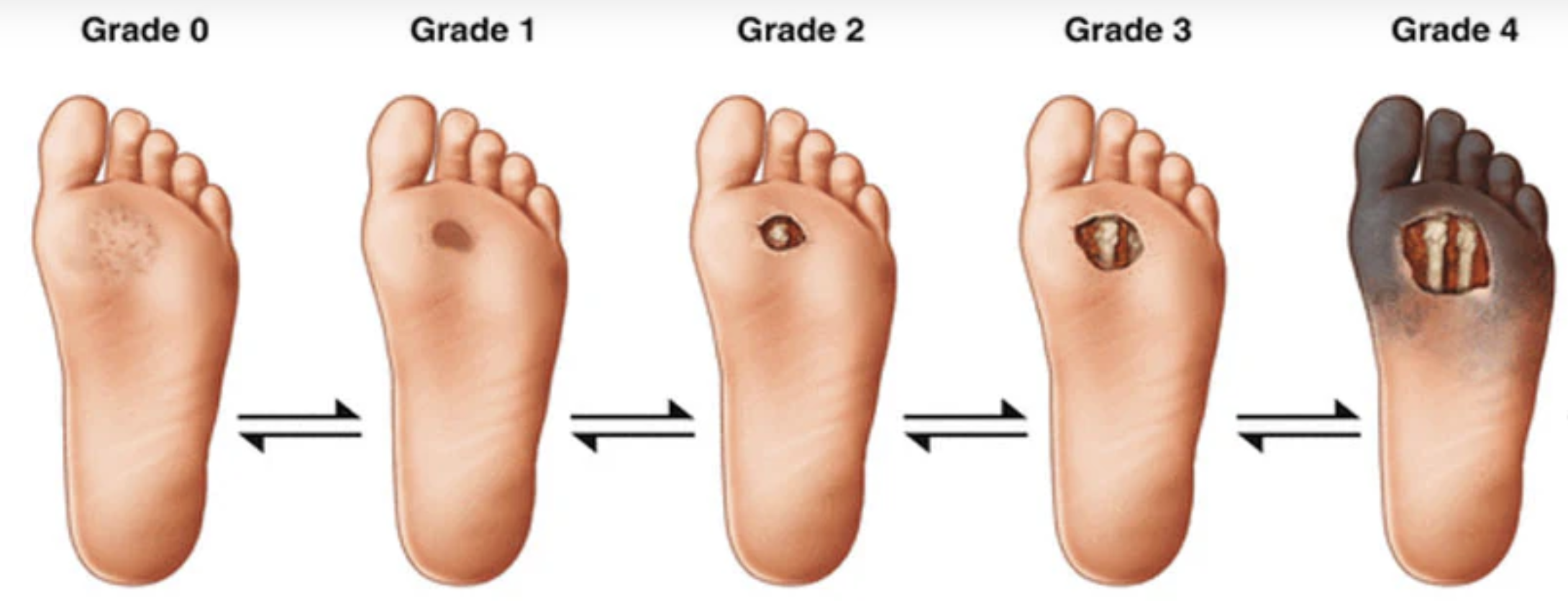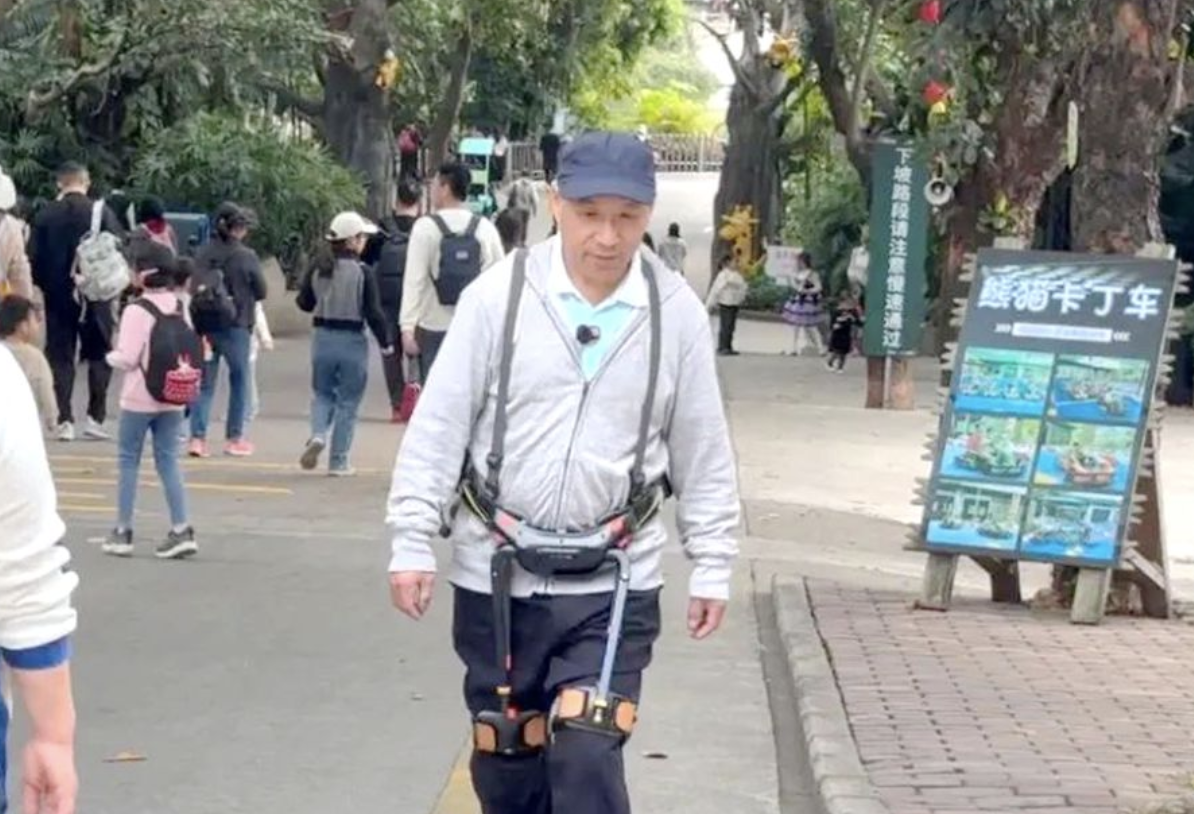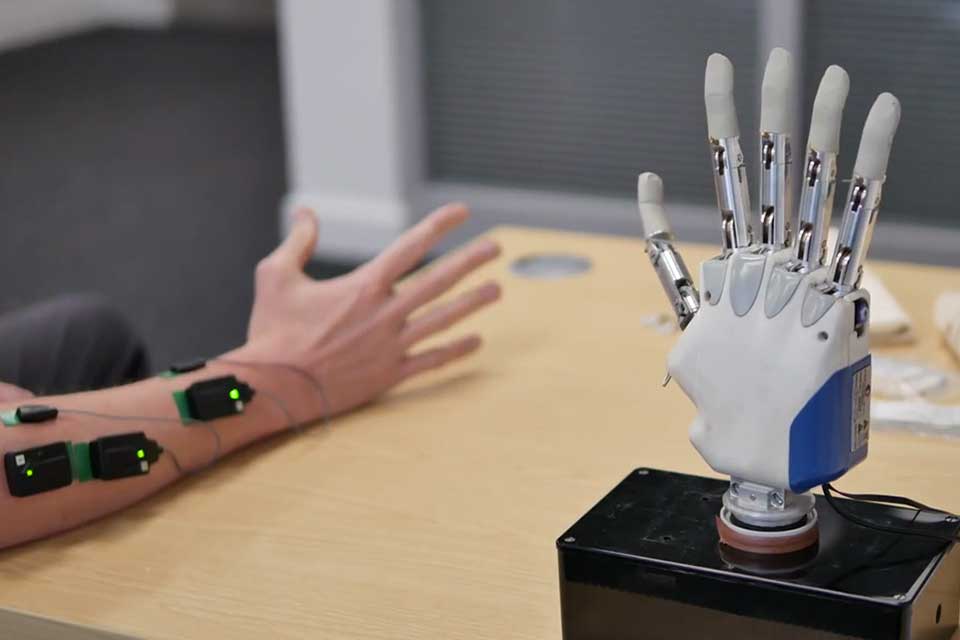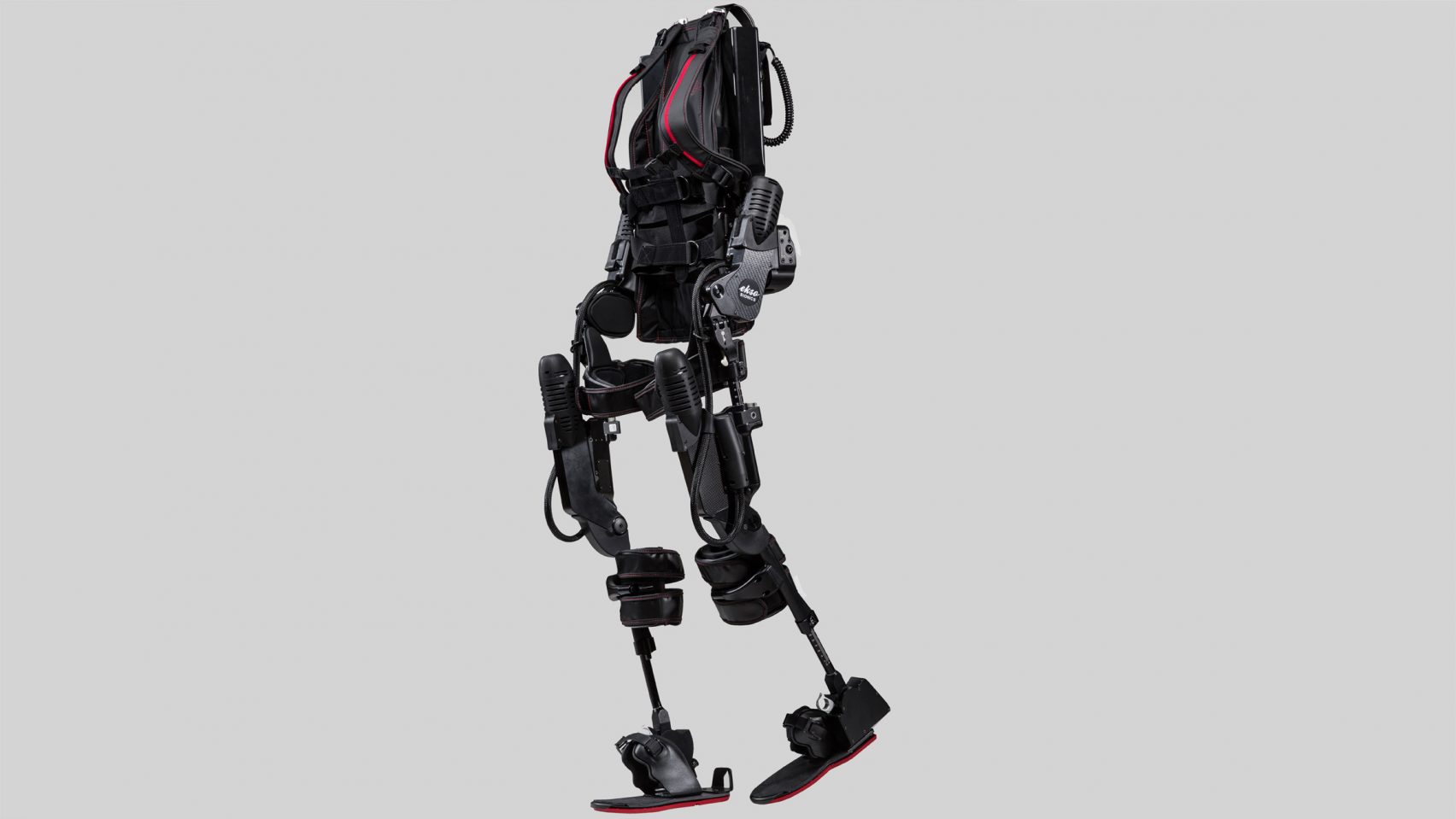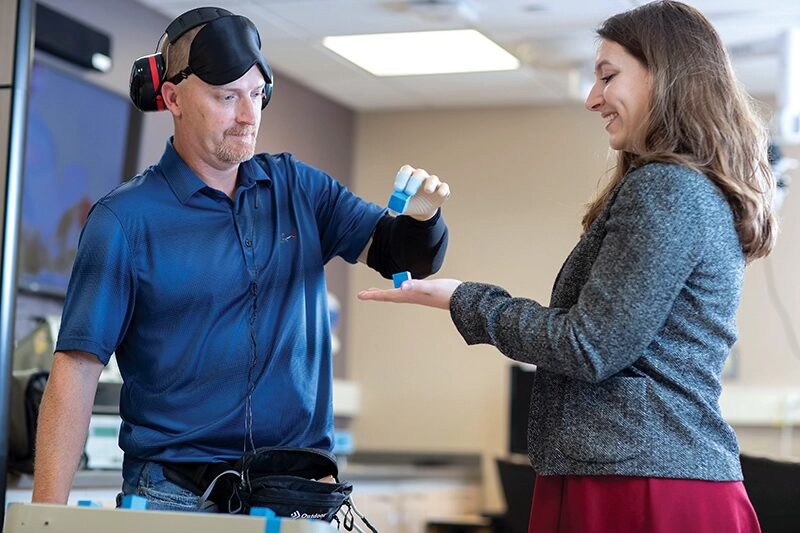Last year, I got to see advanced imaging of my residual limb for the first time. I was only four years old at the time of my amputation, far too young to comprehend the major medical decisions being made on my behalf. It felt validating to see my anatomy and to truly understand, in great detail, why amputation was the best course of action for me.
The set of images included a heat map illustrating the pressure and friction hot spots inside my socket and liner—so that’s why I always get those sores in the same spot! There were also some crazy scans that helped me visualize the alignment of my prosthesis. This very neat technology gave me a new way to understand what my little residual limb is going through.
Such an in-depth exam would typically cost a fortune, but I didn’t have to pay a penny. That’s because I got the scans while volunteering for a research project. Bionic Skins, the Boston-area prosthetics clinic conducting the study, paid for everything, including my flight, my hotel, and my meals. I had never been to Boston before, so I got to explore a historic city while gaining new insights about my leg. I also got to test-drive the most comfortable socket I’ve ever worn. And I’m such a huge nerd that, for me, the best part of the experience was the honor of working with Hugh Herr, who founded Bionic Skins and was leading the research.
Of the many studies I’ve volunteered for, this one was my favorite. But they’ve all been meaningful. Participating in research is a chance to make a real impact, not just for yourself but for the whole limb loss/difference community. You can assist the search for new solutions to enhance amputees’ mobility, mental health, pain management, physical fitness, and overall well-being.
“Every study I join helps drive innovations in limb-loss care, bringing us closer to a future where those affected by limb loss have better options and improved quality of life,” says Caitlin Conner, who has volunteered for many studies and now recruits research volunteers for Bionic Skins.
“It’s a chance to actively shape the future for yourself and everyone in the limb loss community,” adds Phil Skiff, who reviews grant applications for the Congressionally Directed Medical Research Programs. “You could help create the next generation of prosthetics that allow an amputee to run, jump, or dance without pain. You could help bring about a more compassionate healthcare system. Your input could be the catalyst that improves rehabilitation techniques, so people regain confidence and independence faster. Each time you participate, you’re strengthening a foundation that future generations will build upon.”
When I posted about the Bionic Skins study on social media, I got overwhelmed with responses from other amputees asking, “How did you get picked for that—and how do I sign up?” If you’ve ever been curious about participating in research but aren’t sure where to begin, read on. I’ll tell you how to find projects that are actively recruiting amputee subjects, how to decide which studies are good fits for you, how to connect with research teams, and how to guarantee your privacy.
But the first question you need to ask yourself is: Why volunteer?
Teaching the Experts
I’ve been interested in research almost since the time I lost my leg. As a kid, I would design and create specialized devices to help me do fun things like water ski. There weren’t many activity-specific legs available for five-year-olds in the 1990s, but my parents didn’t want that to stop me. They encouraged my DIY prosthesis experiments, and eventually I learned how to build prosthetic legs for real: I got a degree in biomedical engineering.
After graduation, I helped conduct research related to limb difference at Ponseti International (an international pioneer in treatment of clubfoot) and the University of Washington’s O&P clinic. Those projects could not have succeeded without committed, insightful volunteer subjects. I was always grateful for those individuals who donated their time, intelligence, and even their bodies to our research. And they usually seemed thankful for the opportunity to contribute to the advancement of knowledge about limb loss and difference.
I’m no longer an active researcher, but I stay involved as an enthusiastic research volunteer. I’ve lived my whole life with limb difference, and I’ve fitted lots of patients for prosthetic devices, so I understand what amputees want and need. I also have the education to know how limb technology works at the biomechanical level—and how it doesn’t.
But you don’t need any special training to play a key role in supporting research. All you need are the wisdom and insights you’ve gained by living with limb loss or limb difference.
“One of the key questions for any research in this domain is how it provides value to the end user,” explains Skiff. “The amputee has the best line of sight to that particular answer. When you join these projects, you’re lending your voice to make sure that the needs of people with limb loss and difference are not just seen but are truly understood.”
Prosthetic innovation has to be driven by the real-life needs of regular people, says Lauren Houle, a prosthetist and physical therapist for Bionic Skins. Houle, who has been conducting limb-loss research since 2017, says her job would be impossible without feedback from ordinary people.
“As researchers, it’s essential to demonstrate that our solutions can work in real-world settings,” she says. “We rely on individuals from all backgrounds to test these solutions in their daily lives.”
For me, the quest for new scientific discoveries is reason enough to participate in limb-care research. But there are also some more immediate, tangible rewards to volunteering. They include:
- Access to restricted technology and treatments: Depending on the study, you might get to use new prosthetic technology or receive cutting-edge medical treatments that aren’t widely available yet.
- Self knowledge: Researchers typically collect huge amounts of in-depth data about their subjects. That detailed information can yield insights about your personal fitness and health, which can empower you to make better choices in your medical care.
- Financial compensation: Some studies pay for your time and cover your travel expenses. Not all studies pay, but this can be an added benefit.
The side benefits of research participation can be lasting, says Gini Thomas, who in 2022 became one of the first US amputees to undergo osseointegration (OI) surgery following the FDA’s approval. “I have research projects where people carefully analyze my strength and my gait, and that has motivated me to stay in shape,” Thomas says.
There aren’t very many OI patients in the United States, so she’s a valuable data point and is in high demand among researchers. And she’s proud that studies about her experience will ultimately make OI technology safer and more effective for future amputees.
“I’m hopeful the projects I’ve partici-pated in will help patients and clinicians be less fearful about osseointegration,” Thomas says. “Remem-ber, we would not have the advances we have now if others had not been willing to participate in previous research projects.”
How to Find Volunteer Opportunities
There are always researchers out there recruiting amputees for research projects, so finding one isn’t hard. But finding the right one can take some effort.
The “right one” means a project that fits your life experience, demographics, overall health profile, risk tolerance, and personal preferences. Some studies require travel, others involve minor (or even major) surgery, and still others entail changes to your daily routine that can last for weeks or months. Nearly all include eligibility criteria that participants have to meet. There’s more to it than just Googling “amputee research” and filling out a form.
Fortunately, plenty of tools exist to help you discover what’s out there and zero in on the most suitable options. Before you start looking, however, think hard about your physical comfort level. If you’re not willing to participate in anything more strenuous than a survey, interview, or focus group, draw that boundary and stick to it. If you’re okay with tests that involve treadmills, stairs, or strength exercises, but not ones involving electrodes, needles, or experimental medicines, that’s important to know up front.
After you’ve established your personal parameters, the place to start searching for opportunities is ClinicalTrials.gov. Maintained by the National Institutes of Health (NIH), this huge database is the most comprehensive single source of active scientific research projects. At present, ClinicalTrials.gov lists 159 actively recruiting projects under the keyword “amputation,” 29 that are keyworded “phantom limb,” and 25 with the keyword “prosthetic leg.” Dozens more studies on these subjects aren’t recruiting yet but will be in the near future. You can filter by location, study type, age range, and other criteria to winnow down the list.
A second NIH tool, ResearchMatch.org, connects people who want to volunteer for research with investigators from top medical centers across the country. You can create an account for free, then fill out a detailed questionnaire about your health indicators, demographic status, and so forth. All the information is strictly confidential—researchers can search the profiles and send invites to people who match their criteria, but they can’t get your name or contact info without your permission.
If you’re looking for something in your own region, check the websites of local universities, hospitals, and research clinics. These institutions routinely post open calls for participants. You could also check national research centers that have very active limb-loss programs, such as the Mayo Clinic, Cleveland Clinic, Shirley Ryan Ability Center, and University of Washington.
Believe it or not, social media can be a good source of research intel. Project managers have discovered they can reach lots of active, engaged amputees by posting recruitment notices in amputee communities on Facebook, Reddit, Instagram, and elsewhere. That’s how I found out about the Bionic Skins study.
Finally, the Amputee Coalition’s website includes a regularly updated list of active research volunteer opportunities. All the studies listed there have passed muster with the Coalition’s Scientific and Medical Advisory Committee. Visit amputee-coalition.org/research.
No matter what source(s) you use to identify research opportunities, you should never volunteer before consulting with your prosthetist, primary care doctor, and other core healthcare providers. It’s also a great idea to contact the research team before you pull the trigger. Most recruitment notices include a contact name and email (or number), so don’t hesitate to use them. Reach out if you’re unsure about the study requirements or what to expect. Clear communication will help ensure you’re making the best choice for you.
Finally, make sure the research team has had their project protocols endorsed through an institutional review board or ethics committee. This might seem like a technicality, but it builds in a layer of accountability that protects your privacy, your data, and your health.
Conner, who recruited me for the Bionic Skins study, views research participation as an extension of her advocacy work. She founded a nonprofit, Be More Adaptive, to make information about limb loss and disability more widely available and accessible. Volunteering for research promotes the same objective: Equipping amputees with better options, better solutions, and better information.
“I feel honored to contribute to any advancement that improves humanity,” she says. “Research participation is just one aspect of that.”
Angelina Martinson is a biomedical engineer specializing in medical devices and prosthetic technology. Follow her on Instagram at @adaptiveamputees.
